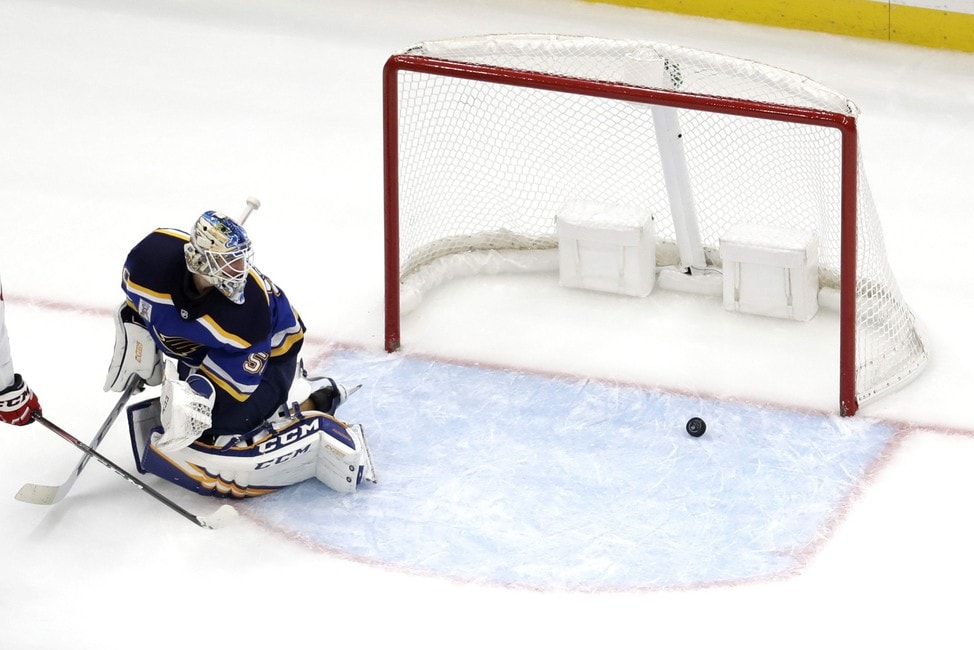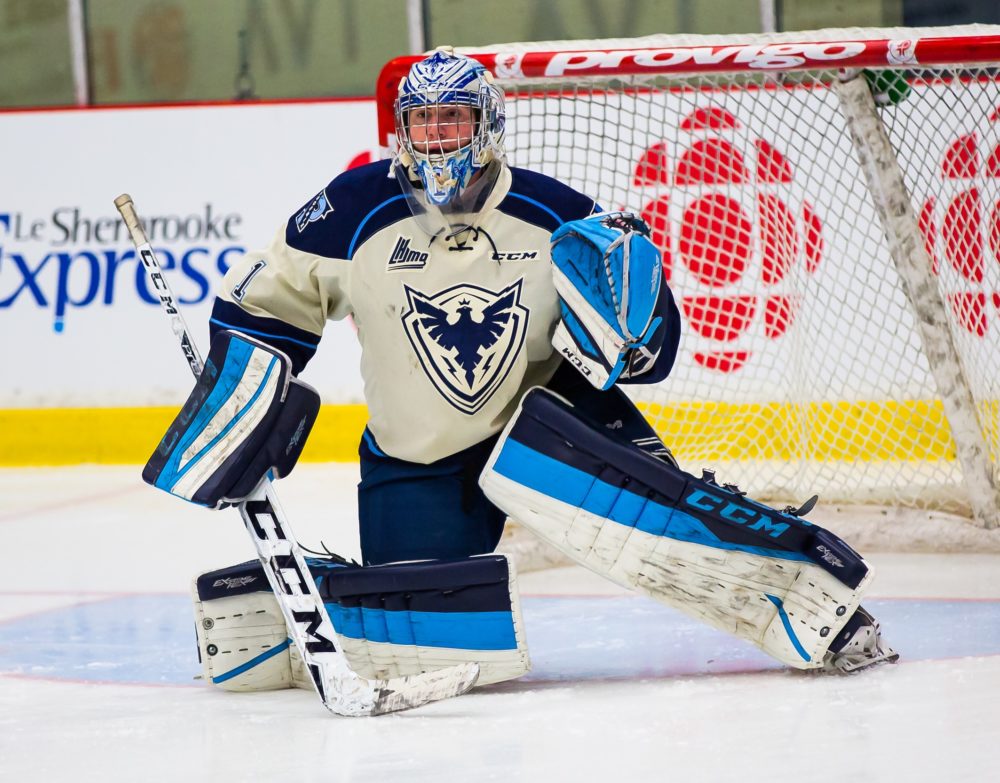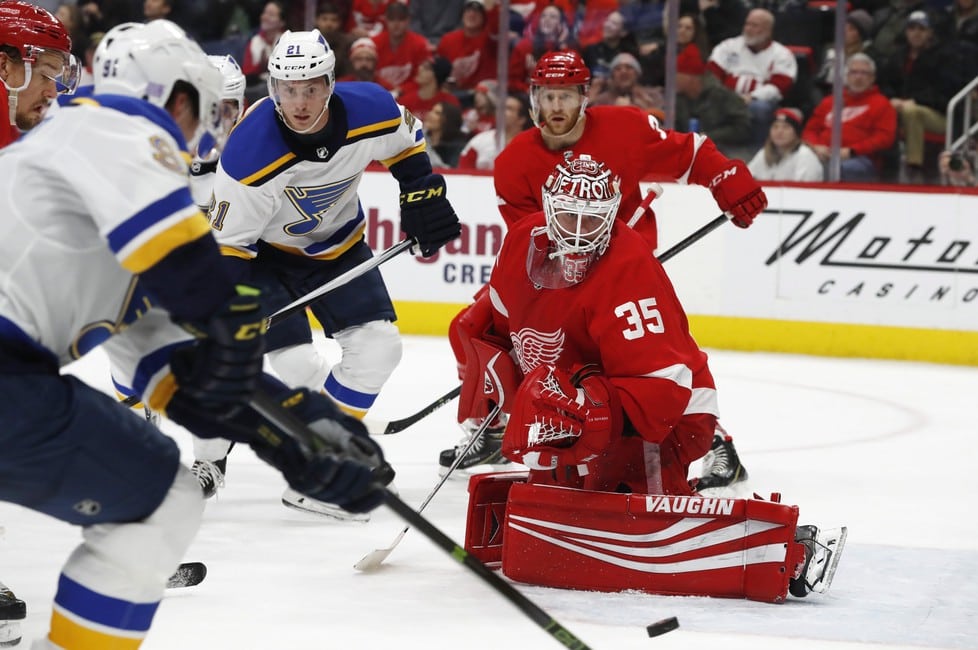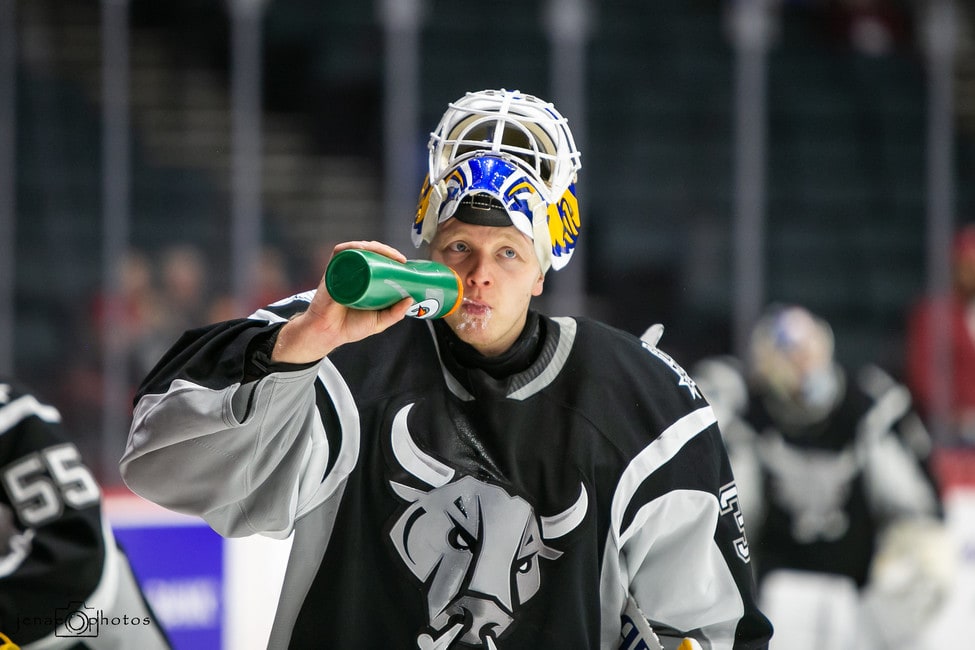With the NHL now set to return to action, fans, pundits, and organizations are starting to settle on the new type of hockey season that will be coming shortly. New division rivals, fewer games, unique scheduling opportunities, and perhaps most importantly; roster implications.
The new season is going to have an impact on who exactly plays in the games. Taxi squads, roster limits, the AHL’s role are all going to provide a different feel to the game relative to what most are used to. But hey, hockey’s back.
The St Louis Blues have a lot of questions to ask about how their roster is going to take shape in the coming days and weeks before the first puck drop. For the most part, the Blues are set in terms of skaters. While there are some small additions and contracts to be sorted out and the potential for an addition to the lineup, the team mostly has its forwards and defender’s situation squared away.
Things become less clear when you look between the pipes for Craig Berube’s Blues. Starting goalie and breakout star Jordan Binnington has proven to be a starter in his short time as an NHL regular. However, the 27-year-old has yet to truly complete a full NHL season as a starter and struggled in the bubble. It will also be the first time the team has gone without a proven NHL caliber goalie as a backup after trading Jake Allen to the Montreal Canadians.
The 3-Goalie Rule
The NHL has mandated that teams will be required to carry at least three goalies on their traveling roster. The plan is, honestly, one of the more common-sense COVID era rules, considering how disastrous (and unsafe) it would be for there ever to be the need for an Emergency Backup Goalie to be called upon or god forbid a skater to be asked to be put on the pads. While the David Ayers story was nice, in a Covid stricken world…it’s just not possible.

The most impactful new rule in the NHL’s return to play plan is one that many may nitpick at for calling it important. In most scenarios, the starters will play an appropriate enough game, with the back-ups then filling in the remaining games and that third goalie being just that. An insurance policy for the worst-case-scenario.
However, the role of goalie is paramount to success in the NHL and in a shortened season, where each game will have an even higher value in terms of impact on playoff potential, the man between the pipes on each and every night will be of the highest importance. As the likely hood of potential Covid complications rises, the more likely your third netminder will be called upon to serve given how common it is for a goalie to be injured or even temporarily unavailable at some point. Thus making that third backstop even more vital to the rotation of your defence
As it stands now, the Blues trio of tenders is partially decided.
The aforementioned starter Binnington will man the crease most nights, with Ville Husso charged with making his NHL debut this season as the backup. The combination is fragile as is, Binnington looked shaky in the bubble and Husso has never seen a shot at the NHL level. Now consider that the other two goalies on the Blues roster who are not currently playing junior have made a combined 12 NHL starts total and none since 2018 and you have a potential powder keg disaster.
The Internal Options
The names waiting in the wings to be the Blues third goalie do not inspire much confidence, not that many third-choice goalies will, but the primary issue is that none of them have experience worth noting in the National Hockey League.
The prevailing third choice tender is Jon Gillies. He signed a one-year league min deal with the club back in October. The 75th pick in the 2012 draft, Gillies has made 12 NHL starts for the Calgary Flames since going pro in 2015. He has primarily served as a starter for the Flames’ AHL affiliate, the Stockton Heat. The Connecticut native hasn’t seen NHL since 2018 but has been highly effective in the American Hockey League as a starter having made 160 starts.
The second option for a potential third goalie in the organization is 22-year-old Evan Fitzpatrick. The 59th pick in the 2016 draft, Fitzpatrick was a standout goalie in the QMJHL helping lead the Acadie-Bathurst Titan to a Presidents Cup. Since then, Evan has been up and down between the ECHL and the AHL, though he did have a brief stay with the big club in 2019 but did not see the ice.

The third goalie in the organization is Joel Hoffer who is currently with the Portland Whitehawk’s of the WHL but it is unlikely he will be called to NHL action just to waste a year of his ELC.
Jim Thomas of the St. Louis Post-Dispatch writes that Gillies is the apparent option if nothing changes (from “Ready, set, go: Blues prepare for fast-approaching season”, St. Louis Post-Dispatch, 12/24/20). He is the most senior member of the core but considering who he is grouped in with that’s not saying much. It raises the question of whether or not the Blues need to go out and get a goalie on a one-year deal to add depth and experience to the goaltending core.
Shopping for a Tender
As it stands, the free-agent market for goalies is thin but it has the exact kind of players remaining in it that the Blues would desire to sign to a short team deal. While cap room is limited, and the likely assigned value of a third goalie is limited, with the training camps opening in short order, and the season soon after, free agents who wish to play (or get paid) will have to take the deals they have in front of them and not be too picky. While they will likely be taking a pay cut in order to sit on the bench, the opportunity to play may be worth the limited deal.
The current free-agent market is filled with NHL veterans who have a depth of experience, which is in short supply for the Blues. Cory Schneider, Craig Anderson, Jimmy Howard and Mike Condon all need teams to play for or face looking for play overseas or potential retirement. Each with a vast array of experience and while past their respective primes would offer plenty in terms of intangibles for the locker room.

Anderson may be looking at retirement as a 39-year-old, however, Howard, Schneider, and Condon may all be looking for opportunities to make comebacks (or extend their career) in the NHL rather than going overseas to prove themselves again.
Adding to the Depth
Ultimately, the Blues, in order to play by the rules will need to add goalie depth in the form of one goaltender of another. With the AHL starting play in February, and the ECHL and Junior hockey’s future up in the air, a decision has to be made about how to allocate assets across organizations. By adding one of your current AHL goalies to the big squad as a third goalie, you are essentially taking them out of the AHL for a year where they will not see (significant) live-action. Is that best for the player? Is that best for the long-term development of your farm system?
If Gillies were to come up and be the Blues’ third goalie, would Fitzpatrick go from playing eight AHL games to a full-time starter? What happens to Gillies’ development if he doesn’t play all season? Will Hoffer make the jump directly to AHL backup from junior? All questions where the answer can be yes, but perhaps that is not the best use of resources.

It seems the Blues need to improve their goalie depth. In a year where contracts can be expected to stay low in terms of financials and expanded in terms of roster space, this may be the perfect opportunity to add to the depth at the NHL or AHL level.
Every game is going to be valued to a higher degree due to a shortened season. Adding a veteran insurance policy with a third goalie when your current goalie tandem is still unproven could make a significant difference in the end. The Blues should avoid potential disaster, and look to add a goalie while the options are out there.